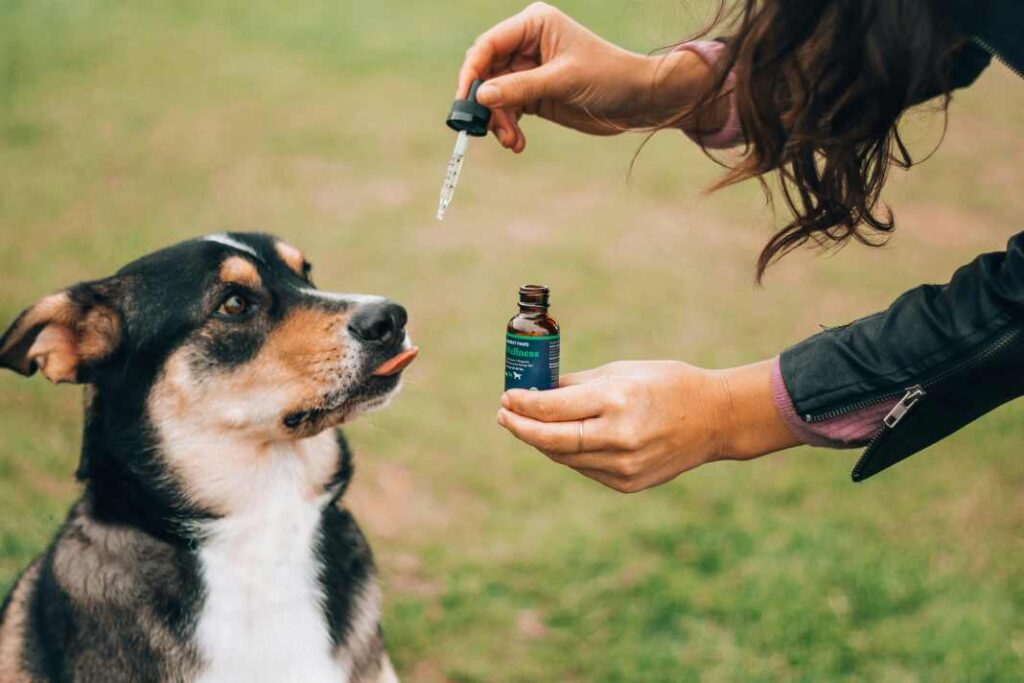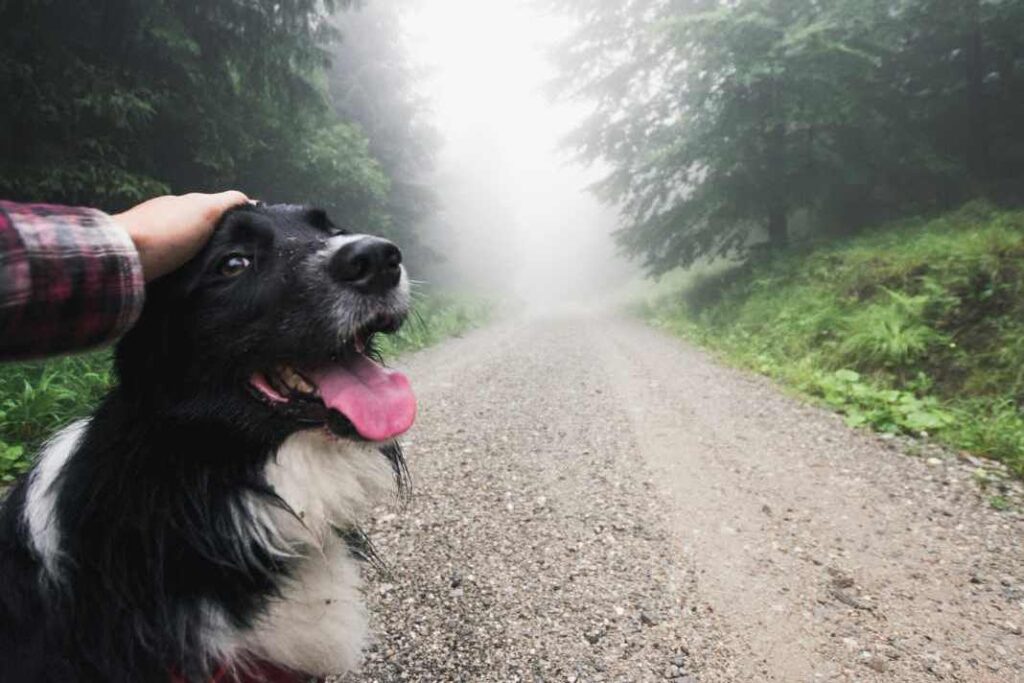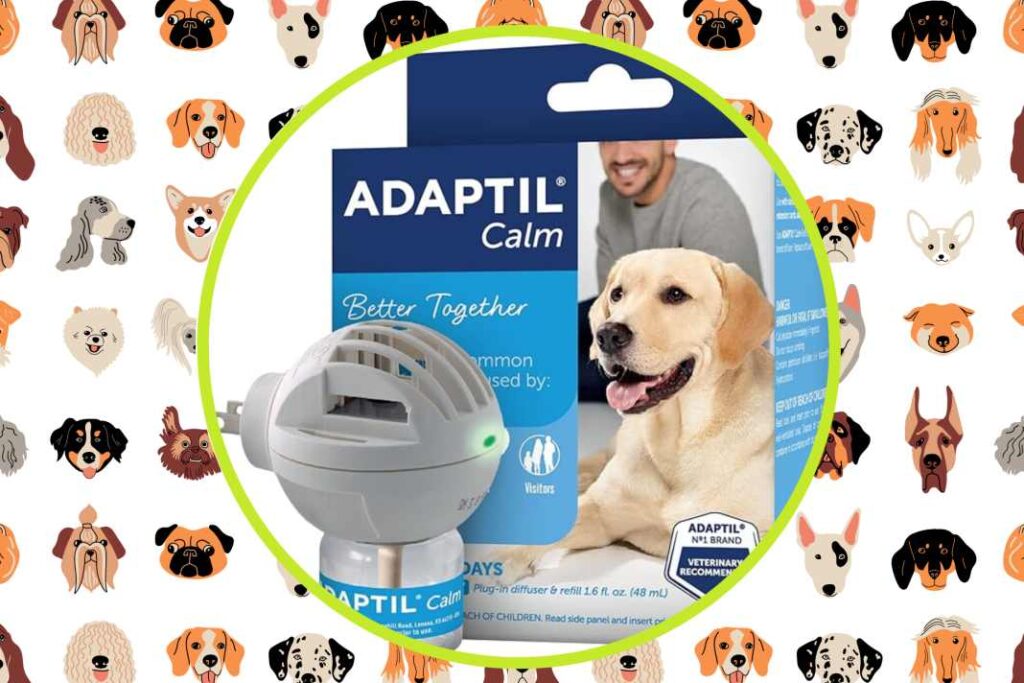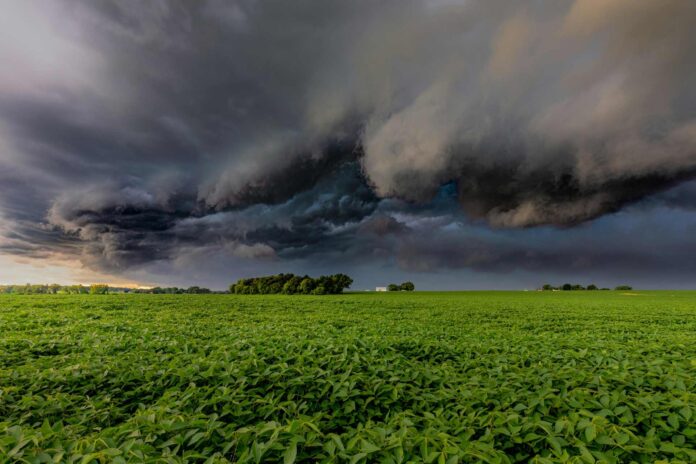A comprehensive guide on coping with dog anxiety during thunderstorms, including understanding the signs of anxiety, creating a safe space, using calming products, desensitization training, seeking professional help, and the importance of owner behavior.
Introduction to Dog Anxiety During Thunderstorms
Thunderstorms can be a source of significant stress for many dogs, leading to a range of anxious behaviors that can perplex and worry their owners. The root of this anxiety often lies in a dog’s heightened sensory perception; their acute sense of hearing allows them to detect the distant rumble of thunder long before humans can, and they are also sensitive to the atmospheric changes that accompany storms, such as shifts in air pressure and the buildup of static electricity.
This sensory overload can make thunderstorms a terrifying experience for dogs, manifesting in behaviors such as incessant barking, chewing on furniture or other items, and other signs of distress. It’s not just the loud noises that affect them; the changes in their environment that they can sense but not understand contribute to their anxiety.
Understanding and recognizing the signs of anxiety in your dog is the first step toward helping them cope with thunderstorms. Dogs may communicate their stress in various ways, including excessive yawning.
These behaviors are indicators that your dog is struggling with the sensory input from the storm and needs support. By becoming attuned to these early signs of anxiety, owners can implement calming strategies more effectively, reducing the stress experienced by their dogs during these natural events.
Click here for Expert Videos to Stop Dog Behavioral Problems!

Understanding Dog Anxiety and Thunderstorm Phobia
Thunderstorm phobia is a complex condition that affects a significant number of dogs. It goes beyond a simple fear of loud noises, involving several layers of sensory sensitivity that are unique to canines. Dogs possess a keen ability to detect changes in air pressure and static electricity, environmental shifts that often precede a thunderstorm.
This heightened awareness can trigger anxiety even before the storm arrives, making early detection of their distress crucial for effective intervention. Dogs communicate their stress through various signs, such as yawning, which may not be immediately recognized as an indicator of anxiety but is a clear signal of discomfort when understood in context. By staying attuned to these early warnings, pet owners can take steps to soothe their pets before their anxiety escalates.
Thunderstorm phobia in dogs involves sensitivity to air changes and static, requiring early distress signal recognition.
Furthermore, the ability to recognize and interpret a dog’s body language is a critical skill for any pet owner dealing with thunderstorm phobia. This phobia manifests through a spectrum of behaviors, from the subtle to the overt. Early signs of distress, such as pacing, whining, or hiding, can quickly evolve into more extreme reactions if not addressed promptly. The challenge lies in identifying these signals early and understanding their significance in the context of an approaching storm.
This knowledge empowers owners to initiate calming strategies, such as creating a safe space or engaging in counter conditioning exercises, well in advance of the storm’s peak, thereby mitigating the intensity of the dog’s anxiety. Recognizing and responding to these cues not only helps in managing the immediate situation but also contributes to a stronger bond of trust and understanding between the dog and its owner.
Signs of Dog Anxiety During Thunderstorms
Recognizing the signs of dog anxiety during thunderstorms is crucial for any pet owner. Dogs may exhibit a range of behaviors indicating distress, from the more subtle signs like trembling and panting to more overt and extreme reactions.
For instance, a dog might desperately attempt to find a hiding spot , even to the point of clawing through drywall or chewing carpets, in an effort to escape the overwhelming sensory experience of a storm. These behaviors are not only destructive but also signal a high level of anxiety that, if not addressed, can significantly impact a dog’s well-being.
Recognizing early signs like trembling and panting in dogs during thunderstorms allows for timely calming interventions.
In addition to these signs, dogs might also engage in excessive pacing, looking for comfort from their owners, or attempting to escape from the house altogether. It’s important to observe these behaviors as early indicators of storm anxiety, which allows for timely intervention.
For example, a dog that starts to pant heavily or pace with the first rumble of thunder is clearly signaling its discomfort and fear. By recognizing these signs early, owners can implement calming strategies before the dog’s anxiety escalates to more extreme behaviors, ensuring a quicker and more effective response to their pet’s distress during thunderstorms.
Coping Strategies for Dog Anxiety During Thunderstorms
Creating a Safe Space
Providing a safe and quiet indoor area for your dog during storms can significantly alleviate their anxiety. This could be a special room or a comfortable crate where outside noises are minimized.
Playing calming music or white noise can also help mask the sound of thunder and provide a distraction during these stressful situations. Engaging with your dog by offering comfort and reassurance during the storm can further help them feel secure.
As an Amazon Associate, I earn from qualifying purchases. When you purchase products through the links on this page, I may earn a small commission at no extra cost to you.

Honest Paws Hemp Oil for Dogs is available on Amazon.com
Using Calming Products
For many anxious dogs, products like the Thundershirt, which applies gentle, constant pressure, can be incredibly comforting during storms. Counter conditioning, which involves changing the dog’s emotional response to the sound of thunderstorms, can also be beneficial.
In severe cases of storm anxiety, consulting a veterinarian for appropriate medication might be necessary to help manage their anxiety.
Desensitization Training
Desensitization training involves gradually exposing your dog to storm sounds at a low volume and associating these sounds with positive experiences, such as treats or playtime.
This method can effectively reduce anxiety by helping dogs form positive associations with the sounds of storms. Consistent, positive reinforcement during these training sessions can significantly improve a dog’s emotional response to thunderstorms.

Seeking Professional Help
If a dog’s thunderstorm anxiety is severe and does not improve with home interventions, seeking professional help may be necessary. Behavioral therapy, combined with anxiolytic medication, can form an effective treatment plan for managing severe anxiety. Natural therapies, such as lavender oil or pheromone sprays, might also be beneficial as part of a comprehensive approach to anxiety management.
The Importance of Owner Behavior
The behavior and attitude of dog owners during thunderstorms can significantly influence how their pets cope with anxiety. It is vital for owners to provide reassurance in a calm and composed manner, as dogs are very adept at picking up on their owners’ emotional states.
A dog looking to its owner for cues on how to react in stressful situations may become more anxious if the owner is visibly stressed or anxious themselves. Thus, maintaining a calm demeanor can help signal to the dog that there is no immediate danger, thereby reducing its anxiety levels.
Additionally, allowing dogs to seek out or create their own safe space, where they feel protected from the perceived threat, can further alleviate stress. Spaces like a quiet corner of the house, under a piece of furniture, or a special doggy den can serve as a refuge for anxious dogs during the din of a thunderstorm.
Owners’ calm behavior during thunderstorms helps reduce dog anxiety, reinforcing confidence and reducing dependency on human reassurance.
Moreover, while it’s natural for owners to want to comfort their dogs when they are scared, it’s important to avoid over-comforting as this can unintentionally reinforce fearful behavior.
Instead, engaging in normal activities as much as possible and using a positive, reassuring tone can help demonstrate to the dog that there is nothing to fear. Providing distractions such as treats, toys, or calm play can also redirect the dog’s focus away from the storm and onto something positive.
This approach not only helps in the immediate situation but can also contribute to the dog developing a more resilient response to thunderstorms and other anxiety-inducing events in the future.
Teaching dogs that they can find comfort and safety without being overly dependent on their owner’s reassurance encourages independence and confidence, essential traits for managing anxiety.
Preventative Measures and Long-term Solutions
Taking a proactive stance towards managing a dog’s thunderstorm anxiety can significantly improve their quality of life. One effective strategy involves creating positive associations with noise events.
For example, engaging in playtime or offering their favorite treats during a storm can shift a dog’s emotional response from fear to anticipation of something positive. This method leverages the principle of counter conditioning, gradually changing the dog’s emotional reaction to thunderstorms.
Proactive management of dog thunderstorm anxiety with counter conditioning, environmental management, and behavioral therapy improves their life quality.
In addition to counter conditioning, employing environmental management techniques can also play a crucial role in alleviating anxiety. Sounds that mask the noise of thunder, such as calming music or white noise, can provide a distraction and reduce the intensity of a dog’s fear response.
Recognizing the early signs of anxiety, such as restlessness or excessive panting, allows for timely intervention and prevents the escalation of fear. Combining these strategies with behavioral therapy and, in more severe cases, medication, forms a comprehensive approach to managing thunderstorm anxiety in dogs.
This holistic method not only addresses the immediate symptoms but also works towards building a long-term resilience in dogs against the stresses of thunderstorms.
As an Amazon Associate, I earn from qualifying purchases. When you purchase products through the links on this page, I may earn a small commission at no extra cost to you.
Calming Canines: Natural Remedies for Calming Dogs and Improving Sleep

Incorporating natural remedies like chamomile, lavender, and CBD oil into a dog’s routine can significantly help in calming them and improving their sleep quality. These remedies offer safe and effective solutions for pet owners looking to enhance their furry companions’ well-being and promote relaxation.
Continue reading: Natural Remedies for Calming Dogs and Improving Sleep
Soothing Solutions: Unveiling the ADAPTIL Dog Calming Pheromone Diffuser

The ADAPTIL Dog Calming Pheromone Diffuser is a vet-recommended and top-selling solution for calming dogs, with a drug-free approach that mimics natural calming pheromones and covers up to 700 square feet.
Read the review: ADAPTIL Dog Calming Pheromone Diffuser




